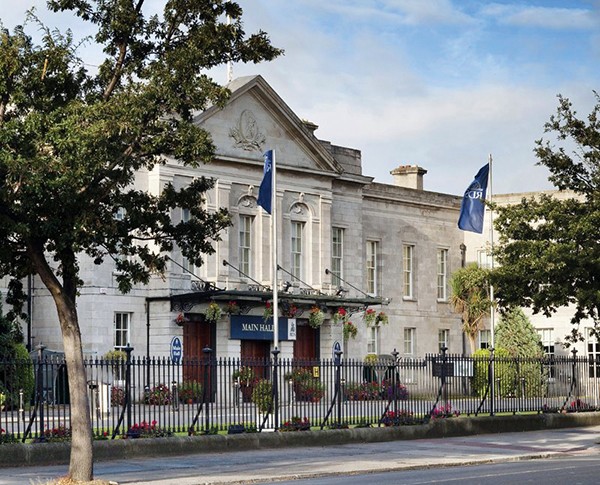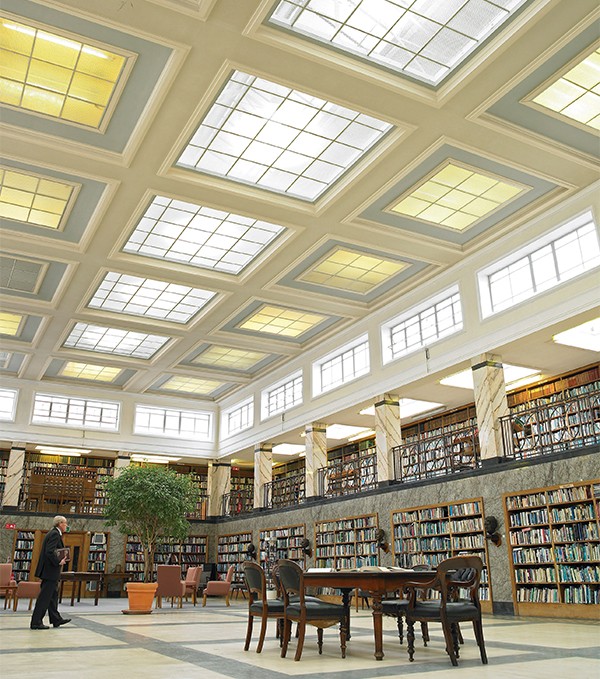
Pictured Above: The RDS Facade.
The Dublin Horse Show is rolling around again soon – the famous international show run by the RDS in Dublin 4 every August. In the mind’s eye, the RDS most probably conjures up images of The Horse Show or a venue for exhibitions – a myriad of them throughout the year. However, the RDS has been around for centuries and has both a magnanimous purpose as well as a surprisingly influential history.
Talking to Joanna Quinn, RDS Foundation Director, it becomes apparent that the organisation is founded on great principles of generosity in the fields that it chose to focus on from the time of its inception. In the spirit of its mission, over 20,000 grants or premiums have been given out by the RDS over the centuries it has existed.
The Royal Dublin Society was created by 14 Irishmen in 1731 as a philanthropic organisation. They came together to improve the poor economic condition of Ireland by promoting four areas in particular – agriculture, arts, industry and science.
This objective, they believed, could be achieved by the dissemination of knowledge and new ideas. Quinn informed NewsFour about the objectives of the organisation from the beginning.
“The society is all very practical. It was about people having professions or jobs. It wasn’t academic; it was a very practical organisation,” Quinn emphasised.
The early approach entailed finding out the latest or best practices and spreading this knowledge through pamphlets or lectures on how to do things very efficiently in order to enhance practices in agriculture, science, industry and the arts. The pamphlets, for example, were ‘how to do’ essays.
Thomas Prior, one of the first 14 founders, wrote a pamphlet on ‘absentee landlords’ in the 1730s. “It was very contentious at the time,” said Quinn, as Prior himself was a landlord’s agent and would have been in those circles, but he was ahead of his time in recognising the problems on the land associated with absenteeism.
On discussing the organisation with Quinn, it quickly became clear that the RDS is not about a physical space, it is about membership and the aims of the members are to enhance the wellbeing of the people of Ireland. The examples start to stack up as Quinn discusses the diversity of work done by the RDS.
“It has given grants for tree planting, bog draining, and linen making in its time,” Quinn noted for examples of how functional the aid was orientated. It has even tried to help with the phenomenon of ‘bog bursts’, which were like agricultural landslides that affected rural people.
Interestingly, in the famine years of the 1840s, there were also experiments commissioned in the Botanic Gardens to try and find a solution to the potato blight. Unfortunately, they never solved it at that time.
“In science, we now do a lot of work with primary school level. One of the things that we think is that science is very important at primary school level,” Quinn noted. The RDS do this as the earlier the interest in science develops in children, the more likely they’ll have an appreciation of it as they grow up.
“In Arts, for example, it’s about helping people get into their professional role as an artist. There is a music bursary.” Quinn outlined a Rising Stars programme for young musicians, part of which is to showcase them and provide a venue where they can play in front of an audience. This includes free concerts for the public twice a year.
In effect, the RDS create a platform for emerging professional artists. “When they leave college how do they start?” Quinn asked rhetorically, implying again that they need pragmatic help to make a career in that area.
With the Irish Forestry Award, for a forester with a specific kind of maturity of trees, judges go out and see the forest and meet the grower. “Talking to the judges is hugely helpful for them. It’s very practical. It makes a real difference on the ground.”
The RDS is full of delightful discoveries inside, none more so than a visit to their present library. Entering, you emerge into a hall of natural light immersing the atrium with illumination streaming in from the high ceilings. It is a marvel inside the older granite-styled front so commonly associated with the organisation.
Head Librarian Gerard Whelan informed NewsFour about the open nature of the library as it is available for the public to consult its archive or conduct research, and it is a pleasant place to conduct study of subject matter. The Library catalogue is also available online to enable the public to find relevant research material.

Pictured above: The RDS Library.
The Speaker Series usually features those “who’ve written books or had something published. The speaker series is free and open to the public, usually on a Wednesday evening and is generally 12 evenings per year,” explained Whelan.
This year, they have already had varied talks encompassing a world shark expert, history of jewellery, great libraries of the world, the writer Roddy Doyle, and Matthew Jebb, Director of the Botanic Gardens. “The main thrust of the speaker series covers the main thrust of the society – agriculture arts, industry and science,” said Whelan.
The upcoming autumn series includes varied subject material such as the bogs of Ireland, Kilmacurragh Botanic Gardens, oral history and its value, and legal cartoons (history of cartoons pertained mostly to those involved in the legal profession).
The first talk is about genetically modified golden rice by Professor David McConnell on September 30th. Although the talks are free, pre-booking with the library is advisable.
What’s quite interesting about the RDS is that it founded many national assets that we now take for granted such as The National Museum, The National Art Gallery, The National Library, and The Botanic Gardens. With the exception of the latter, they were all grouped around the modern government buildings that we see today. The National Library dates all the way back to 1731.
Leinster House used to be the old headquarters of the RDS and the museums and libraries were set up around that. It becomes apparent how influential the RDS was in shaping modern Ireland in both physical, intellectual, and economic terms.
The First Spring Show was in the 1830s on Leinster Lawn. Industrial shows started in the 1850s. The first horse shows were held at Leinster House in the 1860s.
“They gathered stuff to help inform people. The RDS handed them over to government in the 1880s,” noted Quinn. The original scientific lectures of the RDS were in Leinster House. That lecture theatre is now the Dáil chamber.
When Irish Free State Independence came, “the new government had their first meeting in the Mansion House, looked over and saw Leinster House, and they said to the RDS ‘you have to move out’,” Quinn said with amusement.
Luckily the RDS already had its present site in Dublin 4 as there was a need for bigger showgrounds for the Horse Show by the 1880s. The RDS obliged, moving its headquarters to the 42 acres site where it is today.
Its Spring Show lasted until 1992. There was an old railhead. Some locals might remember that there could be a penny earned for bringing animals across from the railhead to the showgrounds.
Membership in the 1980s was as high as 20,000 before the end of the Spring Show in 1992. Membership is now just under 4,000. “We’d be quite happy with that, it’s not a problem,” said Quinn.
In summary, Quinn stated about the RDS that, “people think there’s something special about it, but anybody can become a member of the RDS. The whole idea is to support its philanthropic work.”
The RDS is, of course, most famous internationally for the Horse Show which takes place this year from 5th to 9th August. Preparations are being made once again for this great event.
By Ferg Hayden



